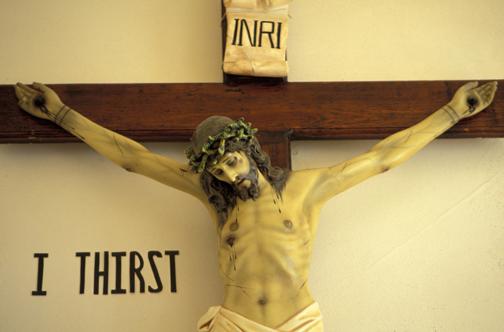Resources for the Paschal Triduum
 Passion Sunday (more popularly known as Palm Sunday) signals the start of our observance of Holy Week, certainly the busiest week in the entire liturgical year which centers around the commemoration of the Paschal Mystery most especially observed in the solemn celebration of the Sacred Paschal Triduum.
Passion Sunday (more popularly known as Palm Sunday) signals the start of our observance of Holy Week, certainly the busiest week in the entire liturgical year which centers around the commemoration of the Paschal Mystery most especially observed in the solemn celebration of the Sacred Paschal Triduum.In the rich yet no less elegant simplicity of its liturgical rites, the Church makes present now the holy events of Christ's last days on earth that fittingly cap his life and ministry, which altogether bring us redemption and show us the way to salvation.
Here are some materials that you may find useful for your Triduum:
Sacred Paschal Triduum
Word document ready for printing. Includes the liturgy for the entire triduum in English as well as the document Paschales Solemnitatis. Prayers of the Faithful and other parts especially composed. In the Appendix, you will also find Mass on Easter Morning, and musical scores of the Regina Caeli (with my translation of the hymn into Filipino) and Fr. Carlo Magno Marcelo's Exsultet. Also includes an alternative formula for the Renewal of Baptismal Promises.
Filipino Exsultet
Fr. Manoling Francisco's new musical score for the Exsultet (short form) in Filipino commissioned by the Minister of the Ministry for Liturgical Affairs of the Archdiocese of Manila, Fr. Genaro Diwa, SLL. Original Score and CD exclusively available at Jesuit Communications Foundation and all Tanging Yaman outlets.
Pange Lingua in Filipino
A new translation. May be sung to traditional melodies.
Liturgical Guide for the Easter Triduum
From the Ministry for Liturgical Affairs of the Archdiocese of Manila. Includes the Rite and Mass Formularies for the traditional Salubong.
Other Triduum Materials
Composed parts of the above document Sacred Paschal Triduum.

The Seven Last Words of Christ
Guide Towards a Mystagogical Reflection on the Seven Last Words
To Follow You More Closely
Making the New Way of the Cross based on the Spiritual Exercises of Saint Ignatius Loyola
Si Hesus na Panginoon
Awit Para sa Paghuhugas ng Mga Paa
Awiting Pampaskwa (Easter Sequence)
According to the same tune as Filipino Pange LIngua and Si Hesus na Panginoon



